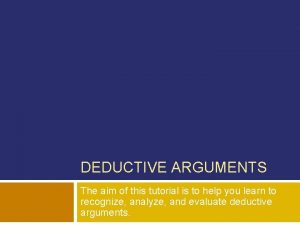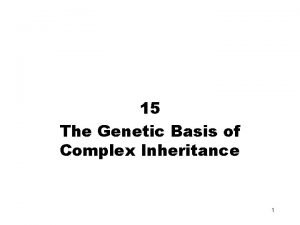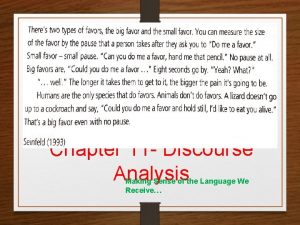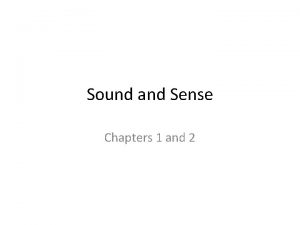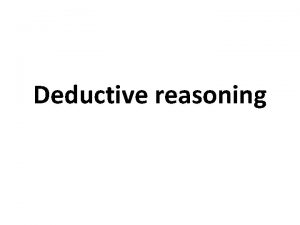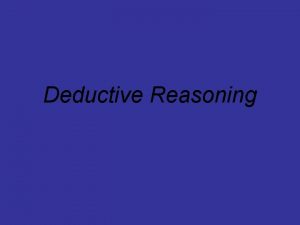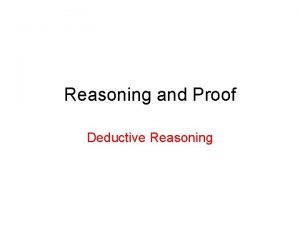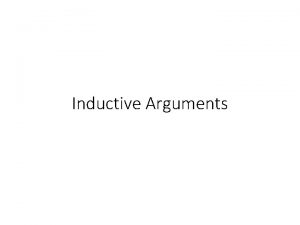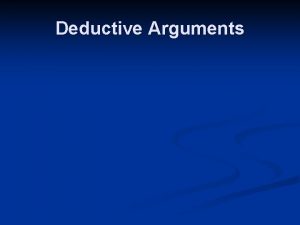Chapter 3 Making Sense of Arguments Deductive Arguments








- Slides: 8

Chapter 3 Making Sense of Arguments

Deductive Arguments • A deductive argument is intended to provide conclusive support for its conclusion. • A deductive argument that succeeds in providing conclusive support for its premise is said to be valid. A valid argument is such that if its premises are true, its conclusion must be true. • A deductively valid argument with true premises is said to be sound.

Inductive Arguments • An inductive argument is intended to provide probable support for its conclusion. • An inductive argument that succeeds in providing probable support for its conclusion is said to be strong. A strong argument is such that if its premises are true, its conclusion is probably true. • An inductively strong argument with true premises is said to be cogent.

Judging Arguments • Telling (1) whether an argument is deductive or inductive and (2) whether it gives good reasons for accepting the conclusion • Step 1. Find the argument’s conclusion and then its premises. • Step 2. Ask: Is it the case that if the premises are true the conclusion must be true? • Step 3. Ask: Is it the case that if the premises are true, its conclusion is probably true? • Step 4. Ask: Is the argument intended to offer conclusive or probable support for its conclusion but fails to do so?

Finding Implicit Premises • Step 1. Search for a credible premise that would make the argument valid. Choose the supplied premise that • (a) is most plausible and • (b) fits best with the author’s intent. • Step 2. Search for a credible premise that would make the argument as strong as possible. Choose the supplied premise that fulfills stipulations a and b above. • Step 3. Evaluate the reconstituted argument.

Valid Conditional Argument Forms Hypothetical Syllogism • If p, then q. • If q, then r. • Therefore, if p, then r. Example: • If Ajax steals the money, he will go to jail. • If Ajax goes to jail, his family will suffer. • Therefore, if Ajax steals the money, his family will suffer.

Diagramming Arguments: Step by Step 1. Underline all premise or conclusion indicator words such as “since, ” “therefore, ” and “because. ” Then number the statements. 2. Find the conclusion and draw a wavy line under it. 3. Locate the premises and underline them. 4. Cross out all extraneous material—redundancies, irrelevant sentences, questions, exclamations. 5. Draw the diagram, connecting premises and conclusions with arrows showing logical connections. Include both dependent and independent premises.

Necessary and Sufficient Conditions • Necessary Conditions: the conditions (or features) that a thing must have in order to be that thing. • Sufficient Conditions: conditions that guarantee that something exists or is a certain kind of thing.
 Type of argument
Type of argument Standard argument form
Standard argument form Inductive argument definition
Inductive argument definition Narrow sense heritability vs broad sense heritability
Narrow sense heritability vs broad sense heritability Narrow sense heritability vs broad sense heritability
Narrow sense heritability vs broad sense heritability Making sense of discourse analysis
Making sense of discourse analysis Is making inference simply making a guess
Is making inference simply making a guess War making and state making as organized crime summary
War making and state making as organized crime summary Sound and sense chapter 1 answers
Sound and sense chapter 1 answers

